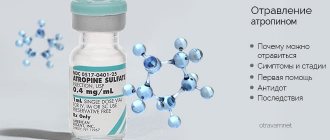It is reliably known that calcium has no toxic properties. A fatal dose has not been identified. Despite this, a person may experience symptoms of hypercalcemia if they regularly consume more than 2.5 grams of calcium per day or if calcium metabolism is abnormal. For example, such a disorder is observed in the disease hyperparathyroidism. This article discusses why excess calcium in the body is dangerous for women. The symptoms and root causes of this ailment are outlined in detail for you below.
Calcium and its role in the body
Calcium is a trace element necessary for the normal functioning of the human body. Calcium is responsible for the formation of the skeleton, normalizes the functioning of the cardiovascular system, the exchange of water, sodium chloride, and carbohydrates. Calcium also regulates the process of blood clotting, has an anti-inflammatory effect, affects the acid-base balance in the body, is involved in the transport of many nutrients, and strengthens the connective tissue of cells.
When the body does not receive the required amount of calcium, it begins to borrow it from its own skeleton. Which has a noticeable effect on the teeth. Excess calcium in the body leads to the development of diseases of the gums and teeth, up to the loss of the latter.
First aid and treatment
Overdose treatment is carried out in a hospital. Doctors use various procedures to help remove excess fluid quickly and restore the body.
Actions:
- Stopping medications containing calcium
- Medicines are used to quickly remove the element in the urine,
- It is possible to use a surgical method to remove one of the parathyroid glands so that the element decreases,
- Hormone therapy is used if necessary.
Why does excess calcium develop?
Calcium enters the body from food, dietary supplements and medications. For example, some medications that are used in the treatment of gastric ulcers and radiation therapy cause an increase in the amount of calcium salt in the blood. There are other reasons for the development of excess calcium:
- disruptions in metabolic processes, with pathologies of the nervous system and impaired functioning of the thyroid gland;
- overdose of vitamin D;
- failure in the hormonal system;
- long-term intake of calcium gluconate;
- oncological diseases: prostate, breast or respiratory cancer.
Causes of drug overdose
An overdose most often develops when the patient takes it independently , as well as when the doctor’s recommendations are not followed. The following causes of calcium gluconate overdose are identified:
- taking large doses of the drug. A person who decides to self-treat with this medicine may “prescribe” himself an inappropriately large dose. An overdose can also occur in a child who mistakenly took it orally. All medications in the house should be kept out of the reach of children;
- using a medicine if there are contraindications to it;
- taking the drug while using cardiac glycosides;
- taking diuretics in parallel with calcium gluconate.
Please note that taking any medications in parallel with calcium gluconate should be discussed with your doctor.
Symptoms in adults and children
The negative manifestations of hypercalcemia manifest themselves in different ways. Of particular importance are the root causes that caused the disease, age, as well as the severity of the disease and the degree of its neglect. The main symptoms that indicate excess calcium in the body are:
- constipation;
- bloating, flatulence, cramps and abdominal pain;
- dry mouth;
- nausea;
- vomit;
- digestive problems;
- increased fatigue;
- depression;
- confusion, disorientation;
- convulsions;
- dehydration of the body;
- disruption of the heart;
- renal failure.
Excess calcium in children manifests itself with similar symptoms. Children also experience: poor appetite, weight loss, absent-mindedness, hallucinations. In babies under one year old, as a rule, excess calcium is accompanied by vitamin D intake or endocrine pathology.
Pregnant women and children
Calcium is very important during pregnancy. Its deficiency can lead to complications during childbirth and problems with fetal development.
The expectant mother needs this element to maintain her teeth and bones in normal condition.
Often, if there is a shortage of a substance, doctors prescribe drugs containing it.
Preparations:
- Calcium d3-nycomed,
- Complivit calcium-d3,
- Calcium gluconate in tablets or injections.
Any of these remedies should only be taken under medical supervision. An overdose of calcium during pregnancy can cause disruption of the functioning of many organs.
In children, calcium is necessary for the normal development of bones and teeth, and it supports muscle tone. With its deficiency, growth and posture are impaired, legs are bent, and teeth constantly hurt. In this case, doctors use various vitamin therapy to restore normal levels.
An overdose of a microelement in children usually occurs accidentally when they swallow a large amount of the drug left unattended by an adult. In such cases, gastric lavage is done and a doctor is called. Treatment is carried out in a hospital.
How to deal with excess calcium
Only a doctor should normalize calcium levels in the body, as well as remove it. Having determined the cause that caused this disorder, the doctor will prescribe appropriate treatment and adjust the patient’s diet.
It is known that calcium is not synthesized, but enters the body with food and medications. Therefore, you should temporarily ban foods rich in calcium: sesame seeds, hazelnuts, almonds, dairy products, halva, dark chocolate, sardines in oil, rice, wheat bread.
The patient is prescribed the introduction of diuretics and loop diuretics (Furosemide) into the body. Thanks to this drug, excess calcium leaves the body in the urine.
If traditional treatment methods do not bring positive results, the patient is prescribed hormonal medications: corticosteroids, bisphosphonates, calcitonin. These drugs inhibit the release of calcium from the skeletal system.
Surgical intervention occurs only if the patient is diagnosed with hyperparathyroidism (a disease of the endocrine system characterized by a disorder of calcium metabolism). The operation involves removing the parathyroid glands. This therapy is quite effective and in 90% of cases eliminates excess calcium in the human body.
How to reduce high Ca levels in the blood
Reducing the level of macroelements in the blood should be done with great caution, constantly monitoring their content using laboratory tests.
Only a doctor can determine how to remove excess calcium from the body without causing any harm to the patient.
Therefore, any decisions about prescribing medications or recommending products that remove excess calcium from the body should be made by a doctor.
What foods remove Ca
Foods that are not recommended for consumption when calcium levels are low cannot be considered as those that can be unconditionally used to reduce the level of this trace element. Some of them, by lowering the level of one element, can cause significant damage to most internal organs and systems. This can be said about table salt, alcohol, carbonated drinks and coffee. Excessive consumption of these foods has been and continues to be harmful and hazardous to health. But there are other products that can remove calcium from the body without much harm to health:
- green tea, thanks to the tea caffeine it contains;
- foods high in vitamin A, which promotes Ca leaching;
- oatmeal porridge;
- distilled water.
It is very important that you should not abuse the above products, especially distilled water, even to lower high calcium levels!
It is necessary to drink large amounts of purified water to remove excess calcium, but over time, distilled water should be replaced with boiled or simply filtered water.
What medications promote calcium excretion?
Serious overdoses of calcium require drug treatment, and in these cases, diuretics (diuretics) are most often prescribed, for example, Furosemide, which ensure rapid excretion of the macronutrient in the urine, as well as calcium antagonists with a high magnesium content (for example, Veropamil). In addition, if symptomatic therapy is necessary, the following may be prescribed:
- glucocorticosteroids;
- bisphosphonates;
- calcitonin.
Of course, all calcium-containing medications should be discontinued at this time.
What happens if excess calcium in the body is not treated?
If you ignore the clinical manifestations of excess calcium in the body, then over time the symptoms will progress. Consumption of calcium above the daily norm (1 g for an adult and 600 mg for preschool children) entails serious consequences. The risk of death from a number of diseases, including the cardiovascular system, increases significantly. In addition, an increase in calcium levels in the body provokes the formation of kidney stones, mineral deposition on the walls of arteries, and the occurrence of prostate cancer.
What are the consequences of an excess of Ca?
Fortunately, Ca is not so toxic that an overdose can be fatal. In any case, medicine does not have data on the lethal dose of this macronutrient. However, excess Ca can lead to serious consequences, requiring long-term treatment and sometimes surgery (for example, in severe cases of aortic valve calcification).
The most commonly observed consequences of hypercalcemia include:
- arterial hypertension – high blood pressure caused by the deposition of calcium salts on the walls of blood vessels;
- gout is a disease of tissues and joints caused by metabolic and salt imbalance and characterized by the accumulation and difficulty of excretion of uric acid by the kidneys;
- calcification – deposits of calcium salts in organs or soft tissues, accompanied by characteristic painful formations in different parts of the body;
- hyperparathyroidism is a disease of the endocrine system caused by an excess of parathyroid hormones due to impaired salt metabolism.
In addition, with hypercalcemia, the excitability of nerve fibers and skeletal muscles is inhibited, the tone of smooth muscles is reduced, useful microelements such as magnesium, phosphorus, zinc, iron are washed out of the body, the blood thickens, kidney stones form, bradycardia and angina develop, and the acidity of gastric juice increases. , which can cause hyperacid gastritis and peptic ulcers.
Given the vagueness of the symptoms of hypercalcemia, one should not hope that independent measures to remove excess calcium will quickly produce noticeable results. For example, hypercalcemia caused by an overdose of vitamin D can be observed in the blood even several months after stopping the vitamin-containing drug. Therefore, when carrying out measures to reduce Ca, you should regularly donate blood for biochemical analysis, monitor the level of its Ca content and be observed by a doctor. This will allow you to most effectively restore salt balance and overall well-being.
Prevention
To avoid excess calcium, you need to follow certain rules:
- consume dairy products in moderation;
- do not exceed the daily microelement intake;
- review your diet and make it balanced;
- if the doctor has prescribed medications to increase calcium levels, then you must strictly follow the prescribed dosage and course of treatment;
- take vitamin D only as prescribed by a doctor;
- Monitor your health and pay attention to body warnings.
Calcium promotes the coordinated functioning of internal organs. If its amount in the body decreases, various pathological changes occur. However, an excess of this mineral leads to more serious consequences, so its use should be controlled and not exceed the daily dosage.
Excess is harmful
Thus, excess iron is accompanied by symptoms of damage to parenchymal organs, in which the microelement accumulates, which leads to the gradual formation of cirrhosis, diabetes mellitus, and skin pigmentation. Iron can accumulate in the body due to therapy with iron supplements in excessive quantities or for a long time, repeated blood transfusions, chronic alcoholism. Excess iron can also occur due to hereditary iron overload (hemochromatosis): a potentially fatal but easily treatable genetic disorder involving excess iron absorption. An overdose of iron is toxic, causing vomiting, diarrhea, damage to the intestines and other organs.
Article on the topic
Low hemoglobin. Why does iron deficiency anemia occur?
Many foods are sources of iron: beef, kidney, liver, fish, poultry, beans, shellfish, molasses, fortified cereals and grains, soy flour. But dairy products contain a minimal amount of iron and cannot replenish its reserves.
The average iron intake is 10 mg per day for men and 15-20 mg per day for women (due to regular loss associated with the menstrual cycle). The maximum amount should not exceed 45 mg per day. The optimal levels of iron in the blood for women are from 9 to 30 µmol/l, for men - from 12 to 31 µmol/l.
An excess of beneficial calcium prevents the absorption of zinc , which, in turn, is responsible, along with copper , for sexual and mental development, as well as for resisting viruses (zinc, like vitamin C, helps the body cope with colds). However, excess zinc can weaken the immune system.
An excess of potassium in the blood serum (more than 5 mmol/l) may be a consequence of impaired renal function, potassium retention in the body, or improper redistribution of intracellular potassium into the blood. The disease can also be triggered by taking medications designed to maintain normal blood pressure and normal blood flow in the heart, liver, kidneys and brain.
Article on the topic
Test yourself. Are you at risk of potassium and iron deficiency?
With mild hyperkalemia, heart rhythm disturbances are observed and in general there are no symptoms, but a serious excess of potassium levels (over 6 mmol/l) can have serious consequences for the body and lead to cardiac arrest. In such a situation, intravenous administration of a solution of calcium chloride or gluconate is required.
Dried fruits (dried apricots, raisins, prunes), as well as peaches, apricots, dogwoods and many other fruits are rich in potassium.
Following iron, calcium and potassium, one of the most important trace elements is magnesium , which is involved in key biochemical processes and is found in many organs. In particular, magnesium is essential for the production of adrenaline and serotonin. A sufficient level of magnesium in the blood serum is from 0.53 to 1.11 mmol/l. An excess of the mineral occurs, as a rule, when consuming synthetic supplements and leads to cardiac arrhythmia, convulsions, nausea and vomiting. With a magnesium concentration of more than 5 mmol/l, administration can cause coma and cardiac arrest.
The best way to avoid an overdose or compensate for mineral deficiencies is to ensure that you eat a nutritious, balanced diet. It should be noted that a decision to take certain vitamins or nutritional supplements can only be made after consultation with a specialist. A blood test, microelement analysis or spectral analysis of hair will help determine which vitamins and minerals the body lacks.
How to take gluconate and medications containing it
Depending on the level already present in the blood, the amount of drug consumed per day differs. For prevention, patients adhere to the following rules:
- 1 tablet with half a glass of water. See how many grams 1 tablet contains: the greater the specific gravity, the less you need to consume at a time. See the instructions for the number of tablets.
- It is better to take with food.
- It is recommended to use no longer than the duration of the course.
Monitor the level of calcium gluconate in the blood, because an excess, like a deficiency, can lead to serious illnesses. Maintain a balance of macro- and microelements and vitamins in the body. And be healthy!
Calcium, Calcium, Ca is a chemical element that is located in Group II of the periodic table under No. 20. It is a light silver-white metal. The element owes its name to the English chemist G. Davy, who in 1808 first obtained the metal from wet slaked lime using electrolysis - “calcium” comes from the Latin. “calx” (genitive case “calcis”) – “lime”, “soft stone”.
Calcium is one of the most common elements on our planet. Thus, among the minerals of the earth’s crust, it ranks fifth in frequency of detection. It is found in large quantities in nature: rocks and clay rocks are formed from its salts, calcium can be found in the water of rivers and seas, and it is also an essential component of plant and animal organisms.
In everyday life, the element surrounds a person all the time. Most of the various building materials - cement, brick, concrete, lime, glass - contain Calcium. In addition, there is quite a lot of it in the person himself.
An adult body contains at least 1 kg of calcium.
Osteoporosis
The main disease caused by calcium deficiency is osteoporosis. This is a disease that affects the structure and strength of bones and increases the risk of fractures. Osteoporosis is one of the four leading causes of death and disability. In addition to osteoporosis, the TOP 4 includes cardiovascular diseases, diabetes mellitus and malignant tumors.
There are no early manifestations of osteoporosis - the process of bone destruction can take decades. Its main manifestation is fractures with minor injuries or without them at all.
Why is this disease dangerous?
It is rarely diagnosed in its early stages, and even less often treated, due to the lack of symptoms. Many people believe that if it doesn’t hurt, then there is no disease.
It is mistakenly believed that osteoporosis is a disease of older people. Yes, the majority of registered patients are over 50 years old. But the disease initially occurs when you are between 25 and 35.
According to Russian recommendations, assessment of the risk of osteoporosis and fractures should be carried out in all women and men over 50 years of age. However, if there is a risk of developing osteoporosis, doctors advise that everyone younger than this age be checked at least once a year.
You may be at risk of developing osteoporosis if: You may be at risk of developing osteoporosis if:
- There has been a history of osteoporosis in your family;
- You are at risk of calcium deficiency;
- You suffered fractures when you were slightly hit or fell from a small height;
- Menopause occurred before age 45;
- You are taking medications (steroids) to treat asthma, arthritis, or intestinal problems. Or if you have been taking antidepressants, anticonvulsants for more than a month;
- You are a woman and have an irregular cycle;
- You have definitely been diagnosed with a hormonal imbalance.
If at least one of the points applies to you, we advise you to undergo an examination and take an analysis that will evaluate your mineral metabolism. It will allow you to evaluate the processes of absorption, transport and release of calcium, phosphorus, magnesium in the bones and blood. Don't forget to add a vitamin D test to it. Get tested and take it to your doctor (generalist or osteopath). Depending on the results, he will prescribe you the correct treatment or adjust it.
- Prevent the use of gluconate or other substances and medications containing metal ions.
- Make an appointment with the doctor.
- It is not recommended to rinse the stomach with a solution of potassium permanganate; the patient may only get worse.
- To induce vomiting, drink 1 liter of water in one gulp. Sweet tea will be helpful afterwards.
Before we figure out why excess calcium in the human body is dangerous to health, let’s consider its significance and indications for prescribing drugs that contain it. Calcium is a macronutrient that is widely found in food.
- In the construction of hard tissues of the body: bones (especially in the first year of life), teeth and hair;
- In conducting impulses during contraction of muscle fibers;
- In blood clotting during bleeding;
- In reducing irritability and reactions to stress;
- Part of cell nuclei and tissue fluid;
- Has a noticeable anti-allergic and anti-inflammatory effect (part of “hot” injections);
Calcium is very important during pregnancy, especially in the second half during the formation of fetal bone tissue and immediately after childbirth during lactation. The increased need for calcium increases during the neonatal period (active growth of the child), during adolescence (hormonal changes), during menopause 50-55 years (threat of osteoporosis).
Why is it faster, more convenient and more profitable to take tests at Lab4U?
You don't have to wait long at the reception
All order placement and payment takes place online in 2 minutes.
The journey to the medical center will not take more than 20 minutes
Our network is the second largest in Moscow, and we are also present in 23 cities of Russia.
The check amount won't shock you
A permanent 50% discount applies to most of our tests.
You don't have to arrive on time or wait in line
The analysis takes place by appointment at a convenient time, for example from 19 to 20.
You don't have to wait long for results or go to the laboratory to get them.
We will send them by email. mail when ready.
Osteoporosis
The main disease caused by calcium deficiency is osteoporosis. This is a disease that affects the structure and strength of bones and increases the risk of fractures. Osteoporosis is one of the four leading causes of death and disability. In addition to osteoporosis, the TOP 4 includes cardiovascular diseases, diabetes mellitus and malignant tumors.
There are no early manifestations of osteoporosis - the process of bone destruction can take decades. Its main manifestation is fractures with minor injuries or without them at all.
Why is this disease dangerous?
It is rarely diagnosed in its early stages, and even less often treated, due to the lack of symptoms. Many people believe that if it doesn’t hurt, then there is no disease.
It is mistakenly believed that osteoporosis is a disease of older people. Yes, the majority of registered patients are over 50 years old. But the disease initially occurs when you are between 25 and 35.
According to Russian recommendations, assessment of the risk of osteoporosis and fractures should be carried out in all women and men over 50 years of age. However, if there is a risk of developing osteoporosis, doctors advise that everyone younger than this age be checked at least once a year.
You may be at risk of developing osteoporosis if: You may be at risk of developing osteoporosis if:
- There has been a history of osteoporosis in your family;
- You are at risk of calcium deficiency;
- You suffered fractures when you were slightly hit or fell from a small height;
- Menopause occurred before age 45;
- You are taking medications (steroids) to treat asthma, arthritis, or intestinal problems. Or if you have been taking antidepressants, anticonvulsants for more than a month;
- You are a woman and have an irregular cycle;
- You have definitely been diagnosed with a hormonal imbalance.
We recommend reading: Hemolytic Escherichia coli: features, treatment and symptoms in adults and children
If at least one of the points applies to you, we advise you to undergo an examination and take an analysis that will evaluate your mineral metabolism. It will allow you to evaluate the processes of absorption, transport and release of calcium, phosphorus, magnesium in the bones and blood. Don't forget to add a vitamin D test to it. Get tested and take it to your doctor (generalist or osteopath). Depending on the results, he will prescribe you the correct treatment or adjust it.
- pain in muscles and bones;
- frequent/profuse urination;
- thirst;
- skin itching;
- abdominal pain, constipation;
- weakness and fatigue;
- depressed mood and memory loss;
- nausea, vomiting and loss of appetite;
- unexplained weight loss.
Symptoms of calcium overdose
- vomit;
- dry skin;
- brittle hair;
- constipation;
- weakness;
- depression;
- poor digestion;
- loss of appetite;
- headache;
- convulsions;
- thirst;
- irritability.
- lower abdominal pain;
- nausea;
- sun intolerance.
- drowsiness and apathy;
- dizziness;
- hallucinations, memory loss.
If you notice any of the symptoms, make an appointment with your doctor immediately. Self-medication will only do harm. The level of the substance is determined through a blood test.
Calcium absorption: which calcium is absorbed better
Scientific research has proven that calcium citrate or calcium carbonate is best absorbed. It is with such components that you need to look for drugs. Calcium is absorbed with the help of vitamin D3 or magnesium, so it is recommended to select complex preparations and spend more time in the fresh air, especially in sunny weather.
In order to enhance the absorption of calcium, it should be taken in the afternoon. The thing is that it is at night that calcium is removed from the body in maximum quantities. If you divide your calcium intake into two times - at lunch and in the evening, you can maximally compensate for its loss at night and promote rapid absorption in the evening.
How is calcium washed away?
Calcium is primarily lost through excessive consumption of certain foods and drinks.
- Coffee, green tea, carbonated drinks.
- Dietary cereals: oatmeal and semolina.
- Salt, its excessive use in food.
- Alcohol.
- Nicotine (smoking).
- Sugar - in large quantities.
- Eating meat without fiber every day (vegetable salads, herbs).
- Diets - food imbalance.
Calcium is also removed by medications that are prescribed to treat many diseases. When prescribing such treatment, doctors must simultaneously prescribe a course of calcium supplementation.











